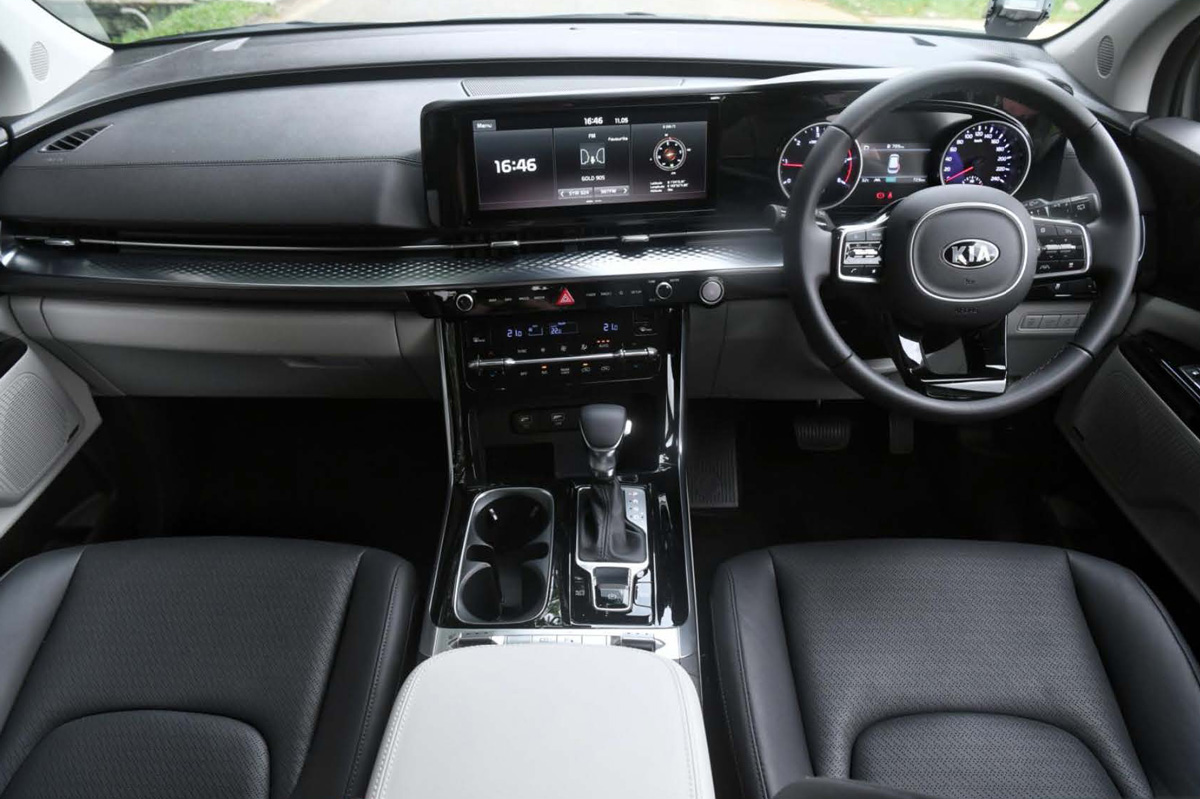[This article was first published on straitstimes.com]
SINGAPORE - Barring some obscenely huge multi-purpose vehicles (MPVs) found only in the United States, the new Kia Carnival is the mother of all MPVs.
Measuring close to 5.2m long, 2m wide and 1.8m tall and weighing close to 2.2 tonnes, the South Korean family carrier with either seven or eight seats has a bigger footprint than even the sumo-size Toyota Alphard.
With a wheelbase of 3,090mm, its hangar of a cabin accommodates three rows of seats with plenty of space to spare.
The seven-seat version tested here has in its second row reclining captain seats - complete with electric adjustments and ventilation (like the front seats). With a spacious aisle between them, you do not even have to move the seats to get to and from the third row.
That row, reserved for small people in most MPVs, is quite adequate in the new Carnival. The car is 40mm longer than its predecessor, which also translates to a class- leading boot size of 627 litres.
It has automatic sliding doors on both sides. Like the Hyundai Palisade reviewed on previous pages, the car lights up and its wing mirrors unfurl when you walk near it. The tailgate also has proximity sensors, which allow for hands-free access to the stowage area.
Many businessmen use chauffeured MPVs for day-to-day commutes instead of limousines because of the superior space and accessibility.
To this end, the Carnival's front passenger seat is equipped with controls on its backrest, which can move the seat farther in front to free up business-class legroom for the towkay.
The eight-seat variant has a configurable second row, which can be flipped around to face the third row - for corporate meetings on the go or board games during family road trips. The middle seat in the second row can be removed too.
Another standout feature is the engine. Agent Cycle & Carriage Kia has picked a 2.2-litre turbodiesel last seen here in the Kia Sorento.
Compared with the 3.5-litre V6 petrol found in the Palisade, the turbodiesel displays a broader torque spectrum, which gives it more flexibility in several driving situations.
It loses out to the big-bore petrol in pedal-flooring take-offs, but is more driveable on the whole with excellent midstream acceleration.
It is not as refined, though, displaying a noticeable diesel chatter which is loudest during idling.
Despite the emission-cheating cases involving mostly German manufacturers, the modern diesel engine remains an efficient choice. If paired with a proper transmission and employed in a light compact car, the overall result can be comparable with what a petrol-hybrid or large electric car arrives at.
 The Carnival has a sizeable infotainment touchscreen, a wireless phone-charging cradle, an assortment of USB and power outlets.
The Carnival has a sizeable infotainment touchscreen, a wireless phone-charging cradle, an assortment of USB and power outlets.
The Kia's Vehicular Emissions Scheme banding says as much. Despite its size and weight, the Carnival attracts a $10,000 emission surcharge - half the $20,000 levy slapped on the slightly smaller, lighter Palisade.
The Kia averages 9.1 litres/100km in this test-drive - noticeably higher than its stated 6.9 litres, but 20 per cent lower than the Palisade.
Given diesel costs about 20 per cent lower than 95-octane petrol at the pumps, ownership savings can be substantial.
Like the Palisade, the Carnival has excellent ride quality and decent handling, even if tighter U-turns might be a tad tricky.
Also, like the Palisade, the Carnival is generously equipped. You will find a sizeable infotainment touchscreen, a wireless phone-charging cradle, an assortment of USB and power outlets, a 360-degree camera and a sunroof.
One notable difference is the cruise control, which is adaptive in the Kia. Both cars have analogue instrumentation, though, perhaps because of the worldwide chip shortage.
The new Carnival has not only grown significantly in size, but also in stature, making it Kia's first serious rival to the Alphard in the executive and family-lugging segments.
[Source article: The Straits Times] © Singapore Press Holdings Limited. Permission required for reproduction. Published 14 May 2021.
